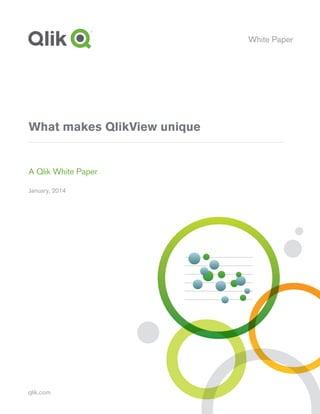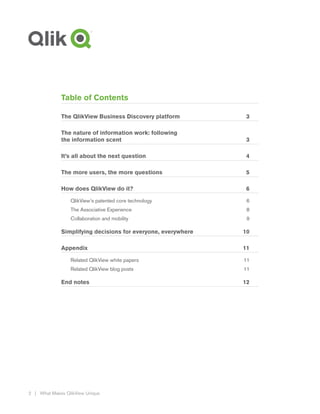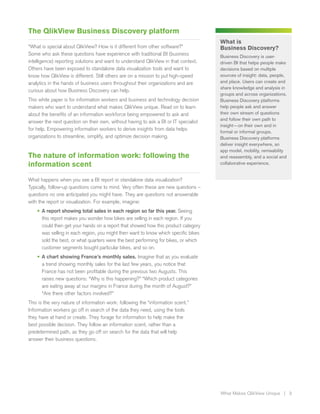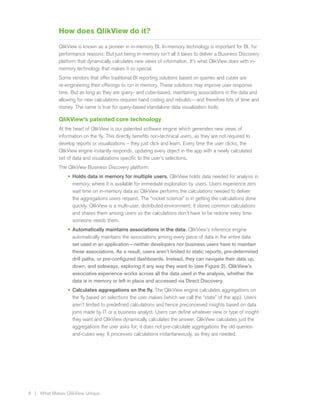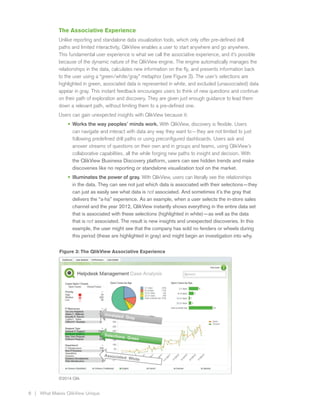QlikView provides a unique Business Discovery platform that allows users to freely explore data and answer their own questions without being constrained to predefined reports or visualizations. It does this through its patented associative engine that holds data in memory, maintains associations between all data, and dynamically calculates aggregations in response to user selections. This enables an associative experience where users can start from any data point and navigate the data in any way by making simple clicks. QlikView also offers collaboration, mobility and big data capabilities to further empower information workers.
